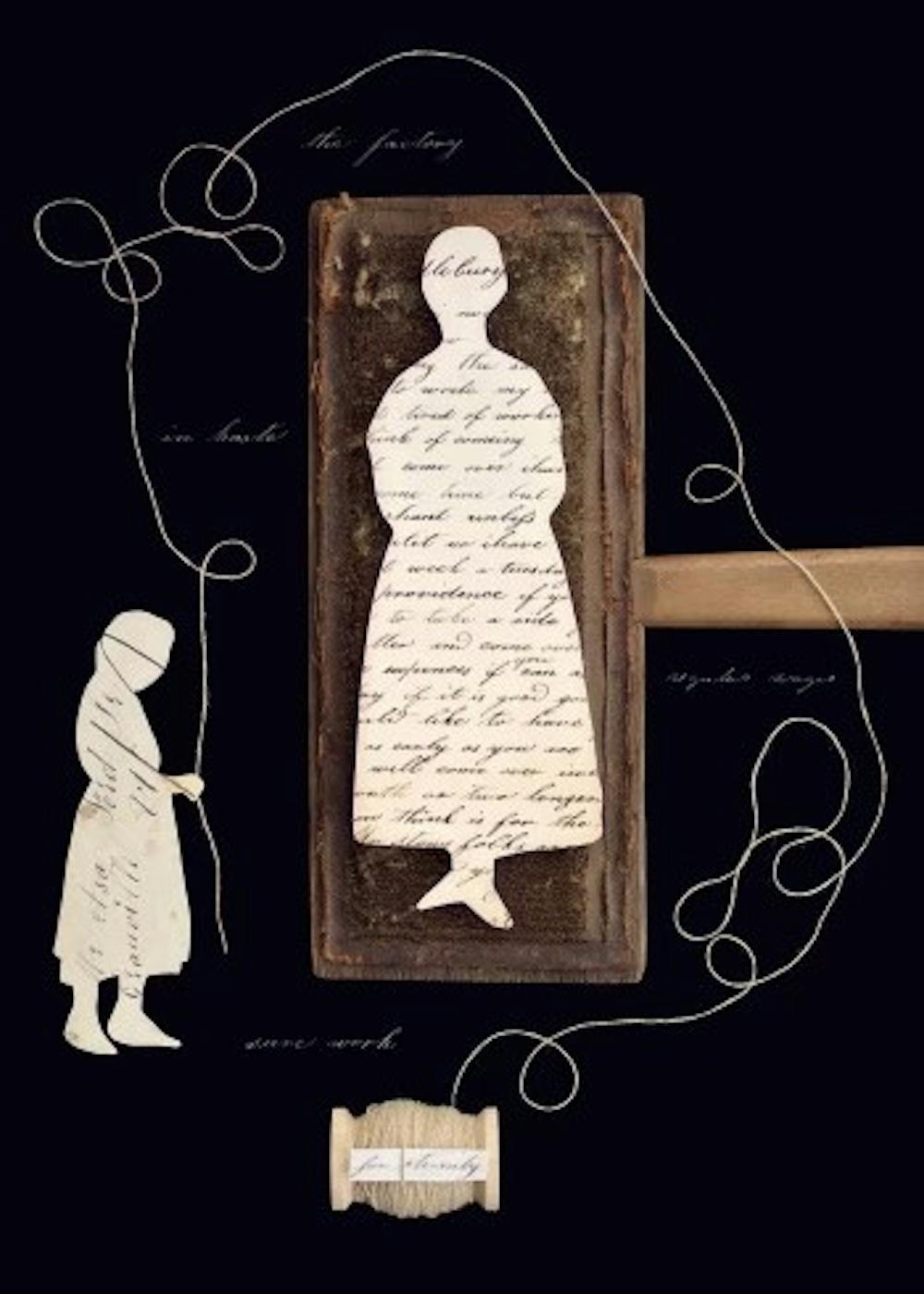Middlebury’s Henry Sheldon Museum is celebrating the 50th anniversary of their Stewart-Smith Research Center with a new exhibit featuring documents from the center refashioned into collages. The exhibit, “Artists in the Archives: Community, History, and Collage,” focuses largely on the idea of community, aiming to explore the question, “What is community?”
About a year ago, The Campus covered the lecture series “The Elephant in the Room,” a project that aimed to examine issues often untold in museums.
“Last spring and summer we decided to continue this exploration with the ‘Elephant in the Archives’ exhibit,” said Eva Garcelon-Hart, curator of the Stewart-Swift Center archival collections. “Elephant in the Archives” explored silences, erasures and relevance. We were wondering how archives such as ours document community.” These reflections led to the creation of “Artists in the Archives.”
Under the direction of guest curator Ric Kasini Kadour, twenty three artists from seven countries arrived in Middlebury to examine the archival materials of the Stewart-Smith Research Center, attempting to answer the question of how community is represented in archives.
The artists identified topics of interest, including the roles of women, people of color, animals, nature and food in Middlebury and Vermont communities. Using scans of archival documents dated between 1840 and 1940 from the research center as a base, the artists then created a series of 24 collages.
A curator, artist and cultural visionary, Kadour led the way for this merging of art and history.
“Collage as an art form is kind of a 21st-century format which yields itself very well to interpreting various societal issues,” Garcelon-Hart said.
“Artists in the Archives” opened Sept. 7 in the Sheldon’s garden with live accordion music and a talk by Kadour. A book published by the Kolaj Institute, an organization dedicated to work in the collage medium, accompanies the exhibit, with images of the 24 collages and their descriptions.
The collage series is arranged by topic and flows in a narrative around the room. It begins with a piece by Scottish artist Jack Ravi titled “A Million Stories,” which features a tree superimposed over portraits that span generations, examining the power of storytelling.
A collection of five collages considers the role of women in the Middlebury community in the 18th and 19th centuries, from young women working in textile mills to the life of Emma Willard and the nature of reproductive healthcare.
An additional collection of six collages explores the documentation of people of color throughout Middlebury’s history. There are few images of people of color who lived in the Middlebury area in the archives, and the collages highlight this.
While there is much to be discovered through what is present in the Stewart-Smith Center archives, there is also a lot to be gained by examining what aspects of Middlebury’s history have been excluded. “These are various kinds of absences in the archives, and we really jump into it. We are not glorifying things, we are asking ourselves questions with this exhibit,” said Garcelon-Hart.
Three artists focused on the role of animals in community, from the organization of humans around animals for companionship, hunting or the circus, to the livestock industry in Middlebury.
Artist Anika Steppe’s collage explores animal companionship. It is accompanied by the citation of a 2017 study from Scientific American, which found that those with pets had a higher likelihood of knowing their neighbors than those without pets.
A century ago, Middlebury’s streets were lined with great elm trees, but they became obsolete in the town by the 1960s. Dutch elm disease devastated this iconic feature of the village; a desolation explored by Polish artist Marta Janik in her collage “Trees as Part of Community.”
“How do we accept the fact that we are all mortal after all? At the bottom of the tree, we see a beetle that is threatening the elm. But on top of it there are little girls holding the seed. The seed and the girls are hope. What will happen next?,” Janik wrote about her collage.
Florida artist Allison Spence created a collage of winter images in Middlebury, titled “Long Enough to Write Our Names On.” She concludes that Vermont’s long, harsh winters bring the community together through the shared experience of the cold.
Moved by her own experience of war and the subsequent heightened attention on access to food, Ukrainian artist Lilya Chavaga examined food in the history of Middlebury’s community. “I contrasted Sheldon’s archive pictures of the store with a modern supermarket,” Chavaga said. “Shopping is an important part of social cultural practice.”
As an extension of the Sheldon’s goal of shining light on topics unseen in exhibits and archives, the museum plans to begin monthly programming in which they invite artists to give talks to continue this discussion. “Artists are the ones who can pick up unfinished history, and artists are the great interpreters,” Garcelon-Hart said.
The Sheldon is the oldest community-based museum in the country, welcoming visitors from all over since 1884. Through temporary historic and art exhibitions, the museum aims to uphold the rich heritage of the region.
The Sheldon museum has been located in Middlebury’s Federal house, at 1 Park Street in downtown Middlebury, since 1829. Situated under a mile from the Middlebury College campus, the Sheldon museum will display the “Artists in the Archives” exhibit until Jan. 7, 2023.

Susanna Schatz ‘24 (she/her) is the Senior News Editor.
She previously served as Local Editor, Staff Writer, and Visuals Artist for The Campus. She is an English major and Gender, Sexuality, and Feminist Studies minor.
Susanna is the social media and marketing intern for a small business started by Midd Alums, Treeline Terrains. In her free time you’ll find her taking in the Vermont outdoors hiking, swimming, skiing, reading in an Adirondack chair, or painting the scenery.




